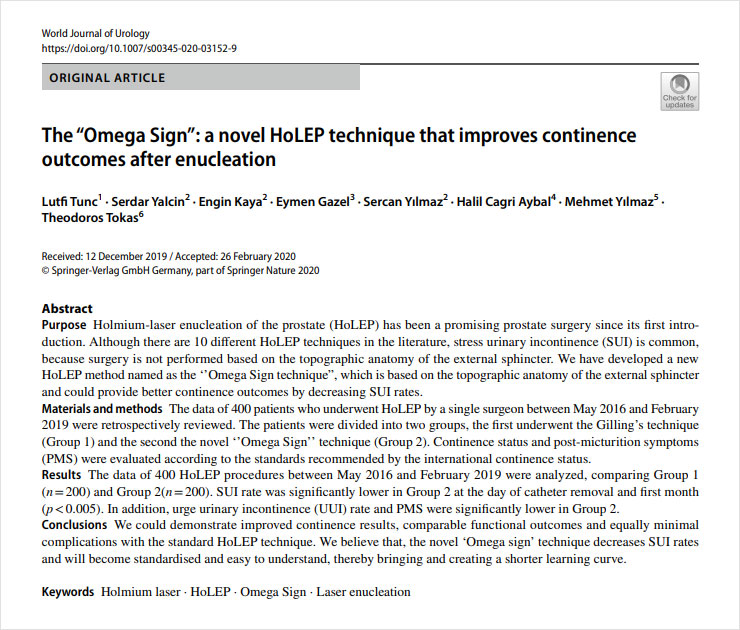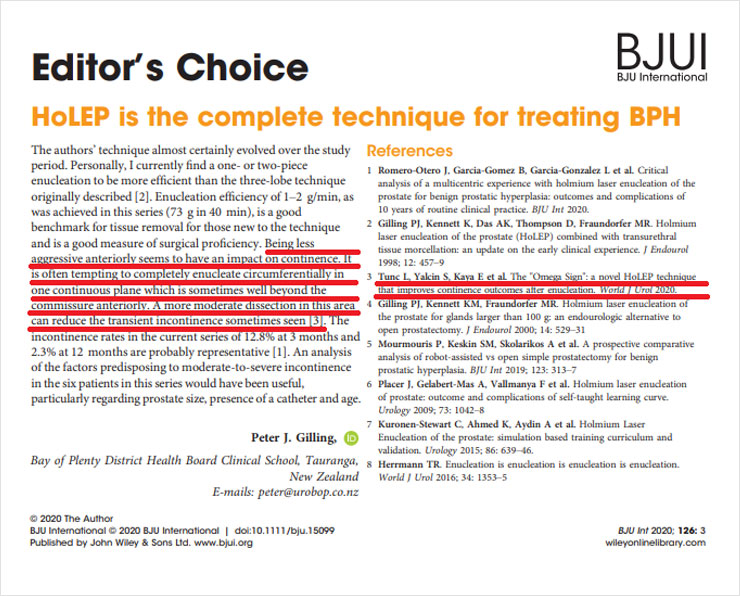Since the first holmium laser enucleation of the prostate (HoLEP) surgery, a lot has changed in the way the surgery is done and the lasers that are used to get better results. Even though holmium laser prostatectomy (HoLEP) was once only recommended for people with large prostates, laser prostate surgery can now be done successfully and safely on all prostate sizes.
Since the use of HoLEP has grown and the success of treatment in patients who have been followed up for many years has been seen, it is now used more often than transurethral resection of the prostate (TUR-P),which was the traditional operation for benign prostatic hyperplasia (BPH),and open prostatectomy, which was done on patients with larger prostates. European (EAU) and American (AUA) urology guidelines suggest that laser enucleation of the prostate (HoLEP, ThuLEP, and ThuFLEP) can replace open prostatectomy and transurethral resection (TUR-P) procedures.
As a result of the increased use of laser enucleation of the prostate (HoLEP, ThuLEP, and ThuFLEP) procedures in addition to laser prostate surgeries, many patients have developed postoperative urinary incontinence at varying rates due to the absence of a standard surgical method.
This is Professor Lütfi Tunc, MD, The relationship between the muscles (urethral sphincter) and the prostate, which cause urinary incontinence when damaged, was examined using cadaver studies, and the extension of this muscle, which provides urine retention, to the prostate was demonstrated. To protect this muscle, he devised a standard surgical technique, which he named the "Omega Sign" technique because of its postoperative appearance. After four years of experience, it was determined that patients did not develop urinary incontinence symptoms after undergoing surgery using the Omega Sign technique. This observation was published as an international scientific study in 2019, and the technique and its results were shared.

Since 2016, the Omega Sign Technique has been utilized effectively and safely. It's applicable as HoLEP-Omega, ThuLEP-Omega, and ThuFLEP-Omega. Peter Gilling, MD, who was the first to discover the laser prostate surgery technique, specifically HoLEP surgery, stated in his scientific article published in 2020 that if the operation is performed with the Omega Sign technique, urinary incontinence is the most significant complication that restricts the use of HoLEP surgery.
Made with the Omega Sign Technique, it is scientifically accepted that laser prostate treatments (HoLEP-Omega, ThuLEP-Omega, and ThuFLEP-Omega) for benign prostate enlargement can be administered with a standard method without causing postoperative urinary incontinence in patients.

Professor Lütfi Tunc, MD, has been using the Omega Sign technique on patients with benign prostate enlargement since 2016. This has reduced the risk that the operation will cause the patient to experience incontinence and dropping. According to the characteristics of the patient, the most appropriate treatment is selected from HoLEP-Omega (benign prostate enlargement treatment with Holmium Laser),ThuLEP-Omega (benign prostate enlargement treatment with Thulium Laser),or ThuFLEP-Omega (benign prostate enlargement treatment with Thulium Fiber Laser).